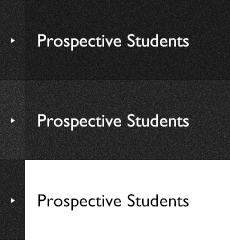From sweets to space, science connects the world
Hiraku Sakamoto, Associate Professor, School of Engineering and Mayu Takeshita, CEO, Takeshita Seika Co., Ltd.
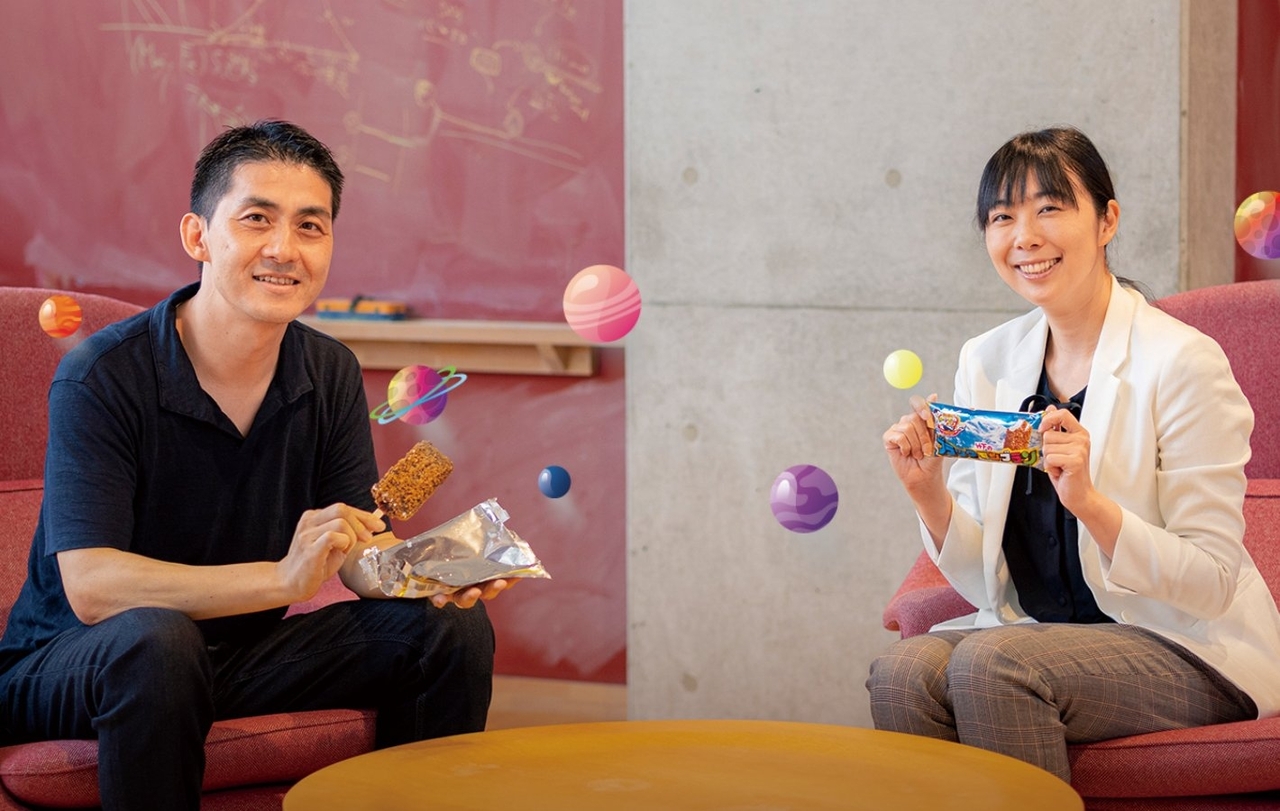
Mayu Takeshita, a Tokyo Tech graduate, is the fifth president of Takeshita Seika, which manufactures and sells "Black Mont Blanc" (a local specialty ice cream in Kyushu), and Associate Professor Hiraku Sakamoto, who develops nanosatellites for proof-of-concept experiments in space. What emerged from the dialogue between these two professionals from different fields is an unexpected common denominator: space exploration. Tracing the trajectory of these two reveals the fundamental value of science.
Involving others in the pursuit of big dreams
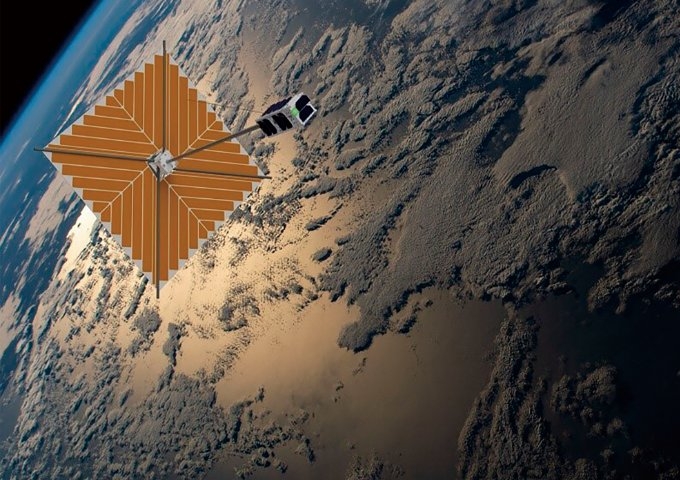
Microsatellites using Origami techniques
(Figure:OrigamiSat-1)
Sakamoto:I have been researching ways to build large scale space structures. The key to achieving this is "origami technology," which involves folding thin film, on which devices such as solar cells and antennas are mounted, into a smaller size. This technology makes it possible to store thin films inside a rocket with limited volume and then unfold them in space. Currently, we are in the process of developing a nanosatellite with students in our laboratory for demonstration in space. Ms. Takeshita, you are the president of Takeshita Seika, which manufactures and sells"Black Mont Blanc."*1 What was your reason for enrolling at Tokyo Tech?
Takeshita:It all started with the International Design Contest (IDC) Robocon, which I saw on TV when I was a child. I was moved by the way students from all over the world worked together to build robots, transcending nationality and language barriers. I decided I wanted to enter the contest and started looking into it. That's when I found out that Tokyo Tech was the only Japanese university taking part at the time. When I was in the fifth grade of elementary school, I asked my parents to get an application form for me, and I became aware of the possibility of going to Tokyo Tech. After enrolling at Tokyo Tech, I devoted myself to studying in the Department of Industrial and Systems Engineering in anticipation of taking over the family business. At the same time, I also took classes in a department that has produced generations of IDC Robocon contestants and informed the instructor of my intention to take part. Due to these efforts, I participated in the 13th IDC Robocon held at the Massachusetts Institute of Technology (MIT) in 2002. My college experience made me realize that I should have a go at everything I want to and not give up.
*1 "Black Mont Blanc," a famous dessert in Kyushu
Takeshita Seika's signature product is a bar of vanilla ice cream coated with chocolate and crumbles. Now in the 54th year since its release, it is loved as soul food by the people of Kyushu. Recently, it has been sold in stores in the Kanto region and online.
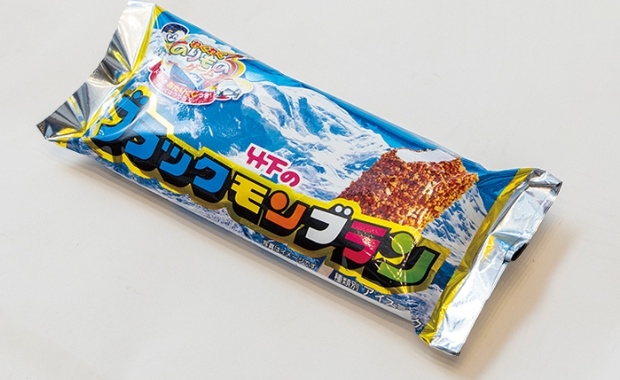
Sakamoto:I strongly sympathize with your positive attitude toward realizing your dreams. My own childhood fascination with science fiction led me to pursue space colony architecture. However, when I was a sophomore in high school preparing to choose a career path, I learned that there were no universities in Japan that researched space architecture. After much agonizing, I turned to Newton, a science magazine that featured space architecture at the time. I sent a letter to the editorial office, and an author kindly provided me with a list of researchers in Japan who work with space structures. Using this information as a guide, I enrolled at the University of Tokyo and studied under a professor who was active at the JAXA Institute of Space and Astronautical Science. In addition, I wrote my master's degree thesis in English in order to achieve my other goal of attending MIT. Eventually, after completing my doctoral studies at the University of Colorado Boulder, I was able to work as a postdoctoral fellow at MIT.
Takeshita:You really took the initiative. Being in a challenging environment leads to personal growth. While I met excellent students at Tokyo Tech and realized my own shortcomings, I began to search for a position that would be the right fit for me. The realization that what is difficult to accomplish alone can be accomplished by collaborating with peers is something that has carried over to every aspect of my life after graduation.
Sakamoto:When you are pushing toward a goal, it is important to involve the people around you. Of course, in order to solicit cooperation, you must propose something of value not only to yourself but also to those around you. I believe that by devising ways to make everyone involved happy, I can continue to pursue my dreams.
Taking on the vastness of space to bring people happiness
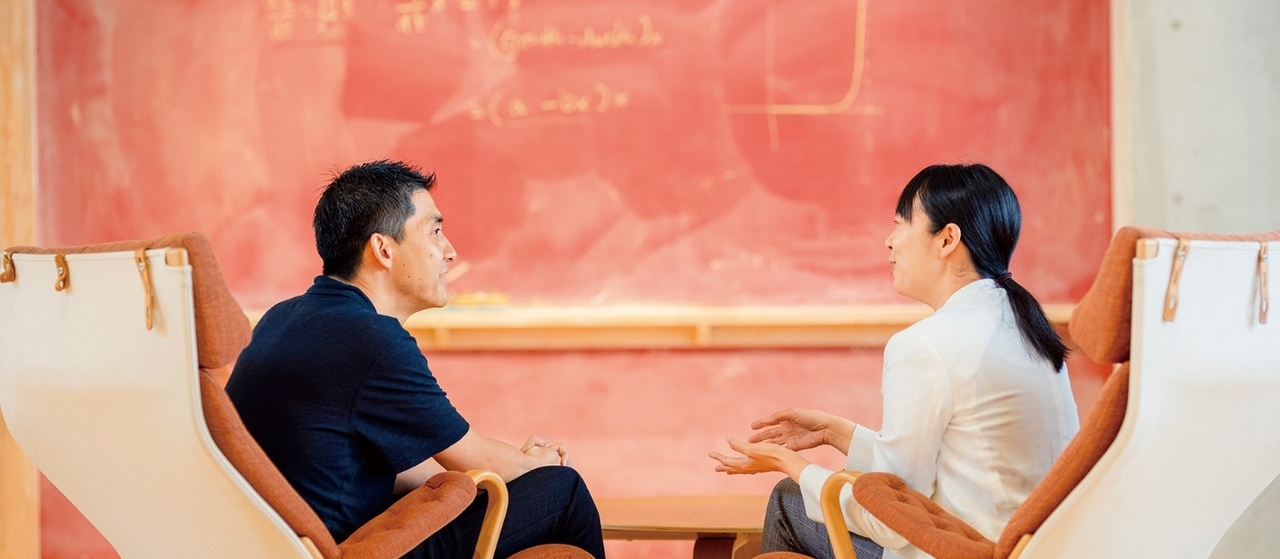
Takeshita:Immediately after enrolling in university, I took part in an event to celebrate the opening of the National Museum of Emerging Science and Innovation (Miraikan) in Tokyo as part of my club activities*2. The event was a panel discussion between astronaut Mamoru Mohri and Tokyo Tech students. The words of someone who has actually set foot in space were very impressive, and ever since then I have been thinking that I want to see space someday, too. It is very interesting to hear from you, Dr. Sakamoto. What changes have you seen in the nature of your research so far?
Sakamoto:I discovered the importance of "origami technology" during my college years and immersed myself in the topic during my master's degree. The turning point was the Small Solar Power Sail Project led by JAXA. A solar sail refers to a spacecraft that uses an ultra-thin film sail to propel itself under the force of solar pressure. I was involved in the development of the IKAROS* demonstrator and was in charge of simulation of the deployment of the 14 square meter membrane structure. The rocket carrying IKAROS was launched in 2010 and successfully completed its mission. The result was a great success, but it was a shock to me that the behavior of the membrane in space was not as simulated. This issue made me acutely aware of the fact that it is impossible to know if a system is viable without first observing the entire process from planning to operation in space. Since then, I have been working with students in the laboratory to plan, develop, and demonstrate in space nanosatellites, as an integrated process. In 2019, we launched a nanosatellite, OrigamiSat-1, with the main mission of deploying a 1 square meter thin film in space. Currently, we are developing OrigamiSat-2, which contains a thin film with an antenna on it, with the aim of communicating with the ground from space.
*2 Engagement in club activities
She was a founding member of the official club "Tokyo Tech Science Techno." In order to convey the joy of science and technology to people, science craft classes and science shows were held. Together with her colleagues from that time, she has been promoting the Space Mont Blanc Project, and the exchanges continue to this day.
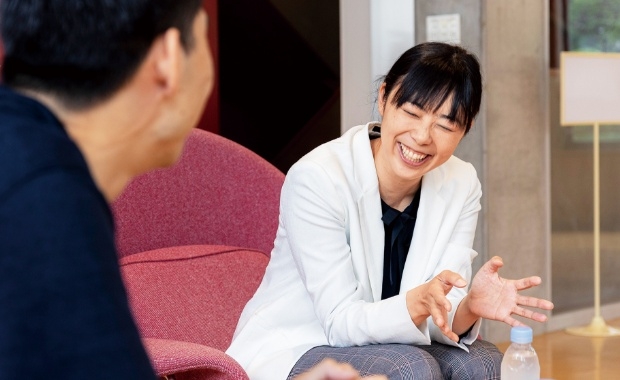
Takeshita:It's a very ambitious mission. In fact, Takeshita Seika is also working on a project titled the "Space Mont Blanc Project." The goal is to launch a Black Mont Blanc in a space balloon that will fly to the stratosphere and capture images with space and Earth in the background. In addition, we are also studying ways to keep ice cream launched into space frozen so that it tastes good on the ground. We are currently on pause due to the COVID pandemic, but when we restart, we hope to share with you the excitement of ice cream's scientific journey into space.
Sakamoto:There is also growing anticipation that the era of eating ice cream in space may soon be upon us.
Takeshita:Developing ice cream as a space food is a medium-term goal. I believe that sweets have the power to make people "petit happy." Whenever I feel tired or anxious, eating something sweet soothes and invigorates me. My dream is to bring sweets that delight people to Japan, the world, and even outer space.
Sakamoto:It will take time to implement the results of my research in the real world, but I too would like to see a future in which deployable membrane structures have brought happiness to people. I would be happy if I could make repeated contributions and someday realize that my research has really benefited the world.
- *
-
To demonstrate for the first time anywhere that it is possible to navigate in space using only a sail and to generate electricity using thin-film solar cells, IKAROS was launched by the H-IIA Launch Vehicle No. 17 on May 21, 2010, sharing a ride with the Venus Climate Orbiter "Akatsuki."
Communicating the significance and joy of science through research that contributes to society
Takeshita:Since assuming my position, I have often been featured as "the female company president who graduated from Tokyo Tech." While I was pleased with the level of interest, I was also concerned about the small number of female students going into science fields. In fact, only about 20 percent of students majoring in science fields at universities and graduate schools in Japan are women. On the other hand, in some foreign countries, the ratio of male to female students pursuing science fields is almost equal. In light of this situation, we have no choice but to believe that in order to increase the number of female science students in Japan, education and awareness-raising activities prior to university and graduate school must be reconsidered. In order to convey the joy of science to children, in recent years I have been giving lectures and doing other activities, mainly in my hometown.
Sakamoto:I think that's a very meaningful initiative. Science is an approach to nature and a discipline that can help solve a variety of problems. It is nothing less than science's ability to accumulate information that makes these applications possible. Newton described it as "standing on the shoulders of giants." The findings of our predecessors, accumulated in the form of papers, provide us with new solutions. Also important is the community of scientists*3. Science has developed through discussions among experts based on logical thinking. I hope that Tokyo Tech students will master both scientific knowledge and communication through our laboratories, clubs, and robot contests.
*3 Working together in a community
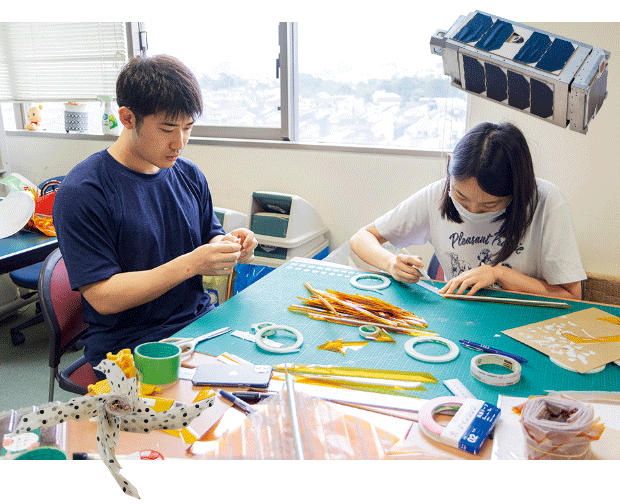
Sakamoto Laboratory is conducting research to build large structures in space. This includes the development of deployable membrane structures and space antennas, as well as the study of systems for building large structures. Particular emphasis is placed on space demonstrations using nanosatellites built by the students themselves. We respect the autonomy of students and offer a wide range of activities.
Takeshita:I have a deep respect for scientists who have a wealth of insight. That is why I feel a sense of frustration when collaboration with society and fundraising languish due to overconcentration on research. Creating two-way communication between scientists and society would create a large synergistic effect. My college experience made me realize that I should play a role in bridging the gap between them. In my day-to-day work, I try to base dialogues on scientific knowledge when meeting with machinery manufacturers.
Sakamoto:As you say, when scientists devote themselves to research only to pursue their interests, they often become shortsighted. This is not sustainable, as they cannot expect the people in their environment to appreciate or fund their research. For this reason, my laboratory encourages students working on research to think about how the results of their research can be useful to society.
Takeshita:From this viewpoint, they realize that most research connects to the real world. Everything around us, including ice cream, is the product of science. Most people may have the impression that there is a high barrier to science, but it is supposed to be a very accessible and approachable discipline. I hope that through our activities, many people will learn about the fascination of science and experience the excitement of it.
There's more! Growing intellectual curiosity
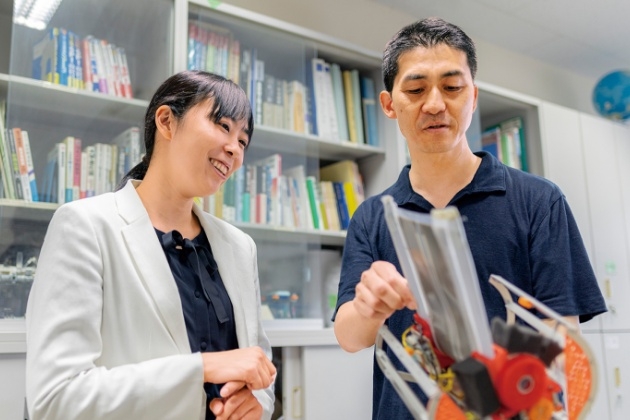
Satellites
Tokyo Tech offers many opportunities for students to work on satellite development. One of the classes involves the design, fabrication, and operation of CanSat, a mock satellite the size of a 350-milliliter can. Every September, they take part in a competition in Nevada, USA, to launch a CanSat to an altitude of 4 km. The goal is to complete a potential-oriented mission during flight or after landing. The insights gained from these demonstrations are being applied to the actual development of satellites.
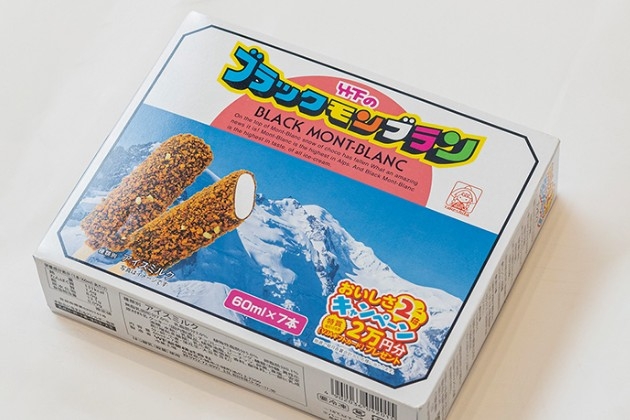
Product development
Black Mont Blanc was born out of an idea of the former chairman of Takeshita Seika who saw Mont Blanc, the highest peak in the Alps. How delicious would it be to eat a pure white mountain with chocolate poured over it. That idea became a reality, resulting in a long-selling, well-loved product. Capturing the universe and the Earth in the Space Mont Blanc Project may provide new inspiration for product development.
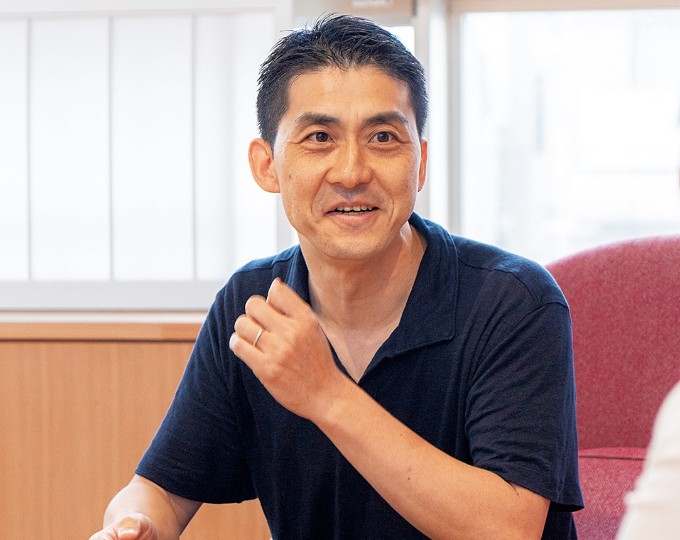
"I began researching space structures because of my love for science fiction. Focusing on connecting with society and collaborating with many people, I continue to follow my dream."
Hiraku Sakamoto
Associate Professor
Department of Mechanical Engineering,
School of Engineering
Received a master's degree from the Department of Aeronautics and Astronautics, Graduate School of Engineering, the University of Tokyo. Completed Ph.D. studies at the University of Colorado Boulder, USA. He has engaged in a wide range of research activities, including the development of deployable membrane structures and space antennas that unfold in space, modeling for the construction of large-scale space systems, and demonstrations in space using nanosatellites.
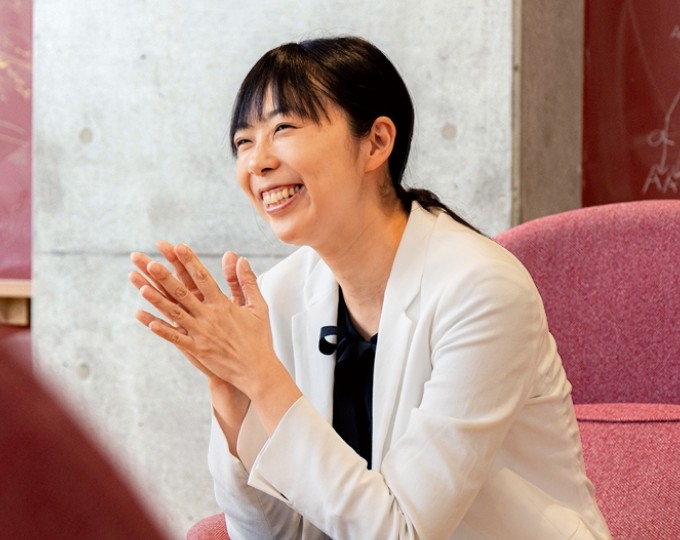
"I believe in the power of sweets to make people smile. My future goal is to provide products from all over Japan to the world and even to outer space."
Mayu Takeshita
CEO, Takeshita Seika Co., Ltd.
Received a master's degree from the Department of Industrial Engineering and Management, Graduate School of Decision Science and Technology, Tokyo Institute of Technology. After working for a foreign consulting firm, she joined Takeshita Seika in 2011. She worked in the Corporate Planning Office to improve the production line and has been the head of the Product Development Office since 2014. She has also focused on developing new products, including "Breakfast Ice Cream," which was released in 2015, and became CEO in 2016.
The Special Topics component of the Tokyo Tech Website shines a spotlight on recent developments in research and education, achievements of its community members, and special events and news from the Institute.
Past features can be viewed in the Special Topics Gallery.
(Interview held on May 19, 2023 at Ookayama Campus)
. Any information published on this site will be valid in relation to Science Tokyo.













